Migraine-Seizure Symptom Checker
Check for Possible Migraine-Seizure Overlap
Answer the following questions to assess potential connections between your symptoms and neurological events.
Analysis Result
When you hear the word migraine, you probably picture a pounding headache, nausea, and a bright spot of light. Migraine is a neurovascular disorder characterized by recurrent, throbbing head pain often accompanied by visual disturbances, nausea, and sensitivity to light or sound. On the other side, a tonic-clonic seizure is a type of generalized seizure marked by a loss of consciousness followed by stiffening (tonic phase) and rhythmic jerking (clonic phase) of the body. The big question is: can the same brain mechanisms that spark a migraine also trigger a seizure? Researchers are now looking into the migraine seizures link to see if there’s more than coincidence.
Quick Takeaways
- Both migraines and tonic‑clonic seizures involve abnormal brain excitability.
- Shared triggers include stress, sleep deprivation, and certain foods.
- Cortical spreading depression (CSD) and glutamate surges are key overlapping mechanisms.
- EEG can help differentiate an aura from a seizure, but sometimes the patterns blur.
- Treatment plans must consider drug interactions, especially when anti‑epileptic meds double as migraine preventives.
Understanding Migraine
A migraine usually starts with an aura - a brief visual or sensory flash that lasts 5‑30 minutes. After the aura, the headache phase kicks in, often on one side of the head, pulsing with each heartbeat. Hormonal shifts, certain cheeses, and even bright screens can light the fuse.
From a science standpoint, migraine is thought to begin with cortical spreading depression a wave of neuronal depolarization followed by a period of suppressed activity that travels across the cortex. This wave releases potassium and glutamate, creating a temporary imbalance that irritates blood vessels and triggers the headache.
Genetic factors matter too. Researchers have identified variants in the CALCA and SCN1A genes that affect calcium channel function, making some people more prone to frequent attacks.
What Is a Tonic‑Clonic Seizure?
A tonic‑clonic seizure is a generalized seizure that typically begins with a sudden loss of consciousness, followed by a stiffening (tonic) phase and a jerking (clonic) phase that can last from a few seconds to several minutes. After the episode, the person often feels confused, tired, and may have a headache.
These seizures are the hallmark of epilepsy a chronic neurological disorder characterized by recurrent, unprovoked seizures. While many triggers are similar to migraine (sleep loss, stress, alcohol), the underlying electrical storm in the brain is usually broader, involving both hemispheres simultaneously.
Shared Biological Pathways
At first glance, migraines and seizures seem worlds apart-one is a headache, the other a convulsion. Yet both rely on a delicate balance of excitatory and inhibitory signals.
Glutamate, the brain’s main excitatory neurotransmitter, spikes during both a CSD event and a seizure. Excess glutamate leads to calcium influx, which can push neurons over the firing threshold. Some anti‑epileptic drugs (AEDs) like topiramate actually block glutamate receptors, and that’s why they’re sometimes prescribed for chronic migraine prevention.
Another overlap is ionic channel dysfunction. Mutations in SCN1A the gene encoding the Nav1.1 sodium channel have been linked to both familial hemiplegic migraine and certain epilepsy syndromes. When these channels misbehave, neurons fire too easily-whether that manifests as a headache aura or a full‑blown seizure depends on the network involved.
Inflammatory mediators, such as CGRP (calcitonin gene‑related peptide), rise during migraine attacks. Emerging evidence shows CGRP can also modulate seizure thresholds, adding another layer of connection.
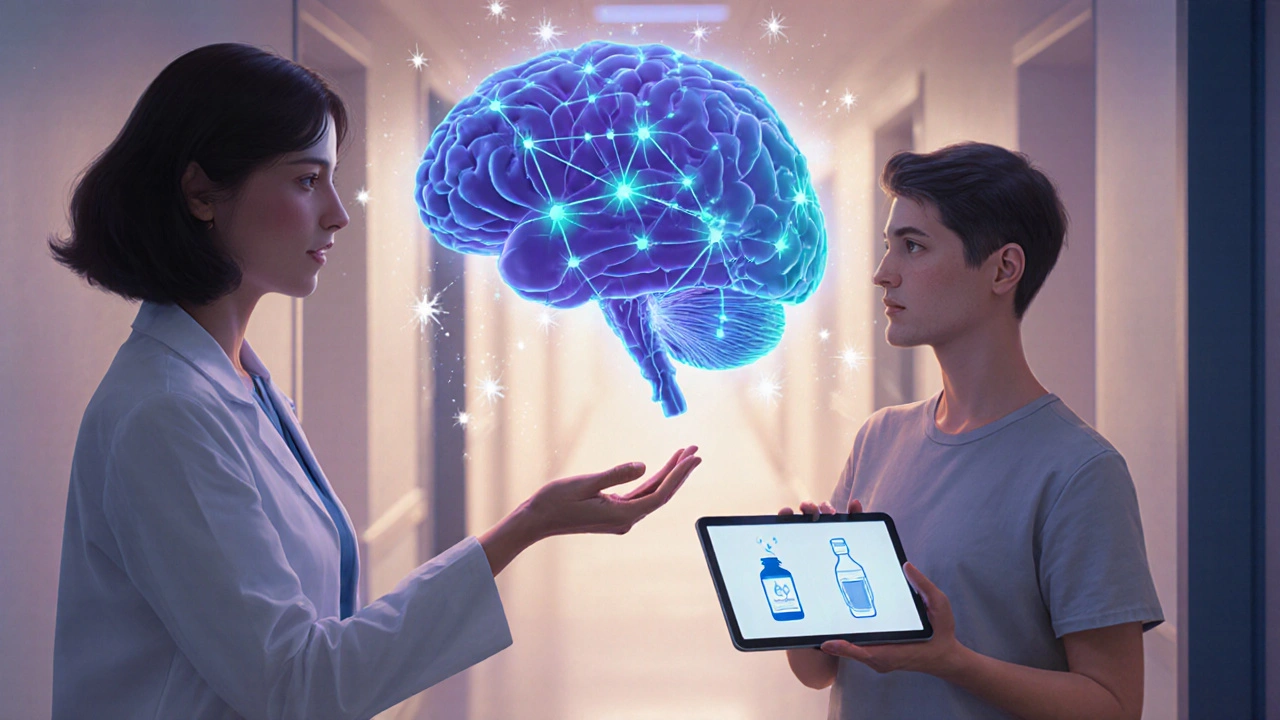
Clinical Overlap: When Migraines Mimic Seizures and Vice Versa
Doctors sometimes face a diagnostic puzzle: a patient reports sudden visual flashes, a brief loss of awareness, and then a pounding headache. Is that an aura followed by a migraine, or a focal seizure that evolved into a generalized tonic‑clonic event?
Key clues:
- Aura duration: Migraines typically have aura lasting less than 30 minutes; seizures rarely produce visual phenomena that persist that long.
- Post‑ictal state: After a tonic‑clonic seizure, patients often have a sleepy, confused period lasting minutes to hours. Migraine sufferers usually feel exhausted but are fully conscious.
- EEG patterns: Seizures generate spikes or sharp waves on an electroencephalogram; migraine aura may show subtle slowing but no epileptiform discharges.
In rare cases, a severe migraine can trigger a seizure, termed a "migraine‑induced seizure". This tends to happen in people with known epilepsy who also have frequent migraine attacks.
Diagnostic Tools: EEG vs. MRI
When the clinical picture blurs, doctors turn to tests.
An EEG records electrical activity from the scalp to detect abnormal brain waves is the gold standard for confirming a seizure. A normal EEG doesn’t rule out epilepsy completely, but a clear spike‑wave pattern confirms a seizure.
Magnetic resonance imaging (MRI provides detailed pictures of brain structures and can reveal lesions, tumors, or vascular malformations that might cause both migraines and seizures) is useful for ruling out structural causes. Some migraine patients show small white‑matter lesions, which are also seen in epilepsy, adding to the confusion.
Management Strategies When Both Conditions Appear
If you’ve been diagnosed with both migraine and epilepsy, treatment needs a careful balancing act.
- Medication selection: Choose drugs that address both. Topiramate and valproate are AEDs that also act as migraine preventives. Avoid triptans if you’re on certain AEDs that lower seizure threshold.
- Lifestyle tweaks: Keep a sleep‑hygiene schedule, manage stress with mindfulness or CBT, and limit caffeine and alcohol.
- Trigger journal: Record headache and seizure episodes, noting diet, stress levels, and sleep duration. Patterns often emerge.
- Regular monitoring: Periodic EEG or blood level checks ensure drug doses stay in therapeutic range.
- Consult a neurologist: A specialist can tailor a plan that respects both conditions, possibly using newer agents like CGRP monoclonal antibodies for migraine while maintaining seizure control.
Never stop a medication abruptly; withdrawal can worsen both migraine frequency and seizure risk.
Research Landscape: Recent Findings on the Migraine‑Seizure Connection
A 2023 study in Neurology followed 2,500 patients with chronic migraine and found that 6% developed a new diagnosis of epilepsy over five years-significantly higher than the general population rate of 1.2%.
Another 2024 neuroimaging paper showed overlapping activation in the occipital cortex during migraine aura and during the onset of generalized seizures, suggesting a shared cortical hotspot.
Animal models have demonstrated that inducing CSD can lower the seizure threshold, while blocking glutamate receptors raises it, reinforcing the biological bridge.
These findings don’t prove causation, but they hint that clinicians should screen migraine patients for subtle seizure signs, especially if aura patterns change.
Key Takeaways
Both migraines and tonic‑clonic seizures stem from an over‑excitable brain, share genetic and biochemical pathways, and can sometimes trigger each other. Accurate diagnosis hinges on careful history, EEG, and imaging. Treatment that addresses both conditions-often with overlapping medications-offers the best chance for symptom control.
| Feature | Migraine | Tonic‑Clonic Seizure |
|---|---|---|
| Typical Duration | 4‑72 hours (headache phase) | 30 seconds‑2 minutes (convulsion) |
| Loss of Consciousness | Rare, only during severe aura | Almost always present |
| EEG Findings | Often normal or mild slowing | Spike‑wave or polyspike discharges |
| Common Triggers | Stress, sleep loss, certain foods, hormonal changes | Sleep deprivation, alcohol, flashing lights, fever |
| Primary Treatments | Triptans, CGRP antibodies, preventive meds (beta‑blockers, topiramate) | Anti‑epileptic drugs (valproate, levetiracetam, carbamazepine) |
| Potential Overlap | Aura can resemble focal seizure | Severe migraine can lower seizure threshold |
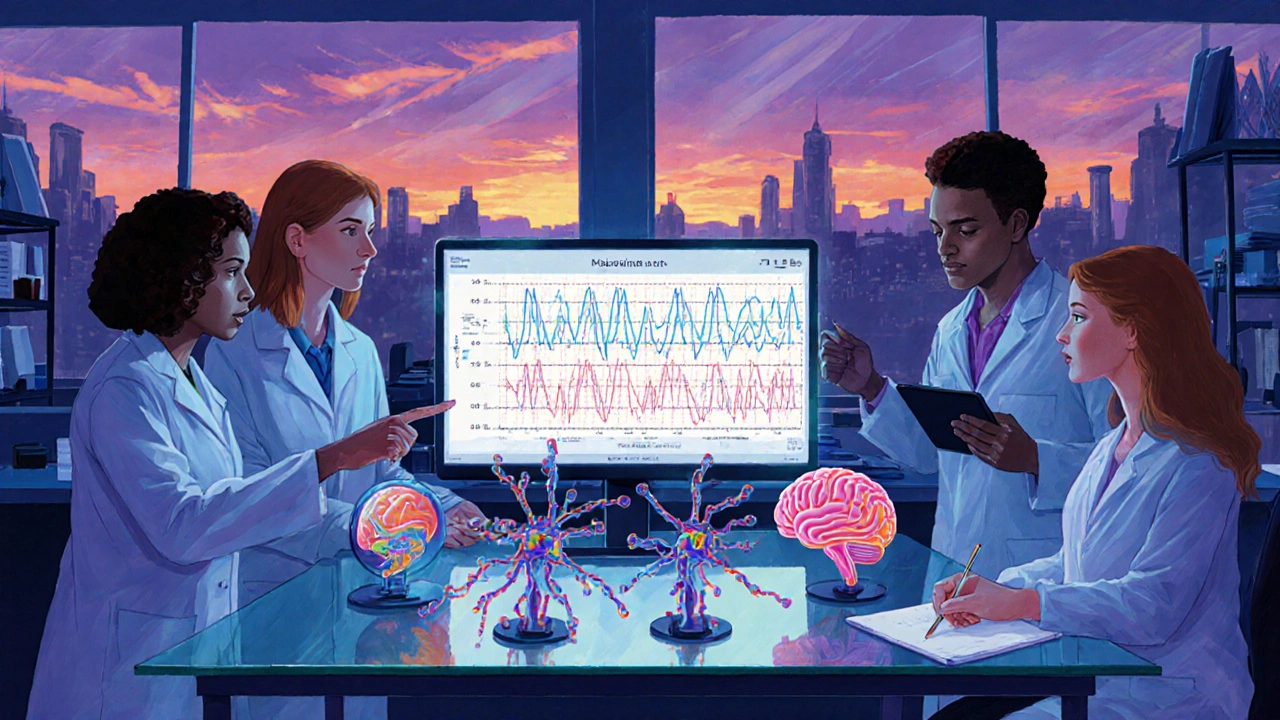
Frequently Asked Questions
Can a migraine cause a tonic‑clonic seizure?
In rare cases, a severe migraine-especially one with prolonged aura-can lower the brain’s seizure threshold, leading to a seizure in people who already have epilepsy. For most migraine sufferers without epilepsy, a seizure is unlikely.
Are migraine preventives safe for people with epilepsy?
Many migraine preventives double as anti‑epileptic drugs, such as topiramate and valproate. They’re generally safe, but dosage should be tailored by a neurologist to avoid side‑effects or drug interactions.
How can I tell if my visual aura is a seizure?
A migraine aura usually lasts under 30 minutes and is followed by a headache. A focal seizure aura can last seconds to minutes and may be followed by loss of consciousness or jerking movements. An EEG can definitively differentiate the two.
Do anti‑epileptic drugs increase migraine attacks?
Some AEDs, like carbamazepine, can worsen migraines in a small subset of patients. Others, like lamotrigine, are neutral or even helpful. It’s essential to discuss any change in headache patterns with your doctor.
Should I get an EEG if I have frequent migraines?
Routine EEG isn’t required for typical migraine. However, if you experience atypical symptoms-like prolonged loss of awareness, shaking, or unusual aura-an EEG can rule out seizure activity.


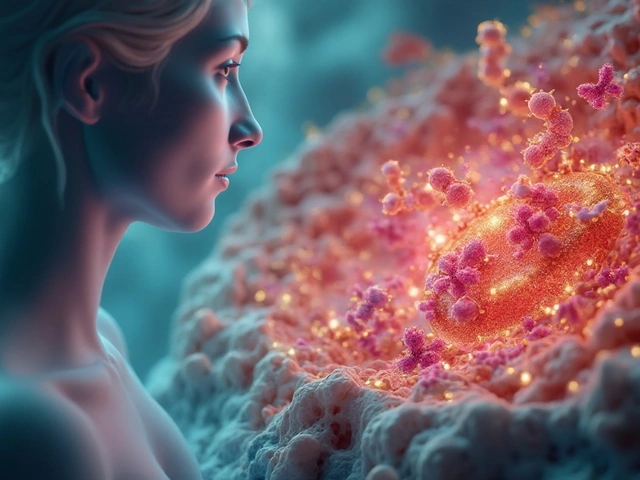
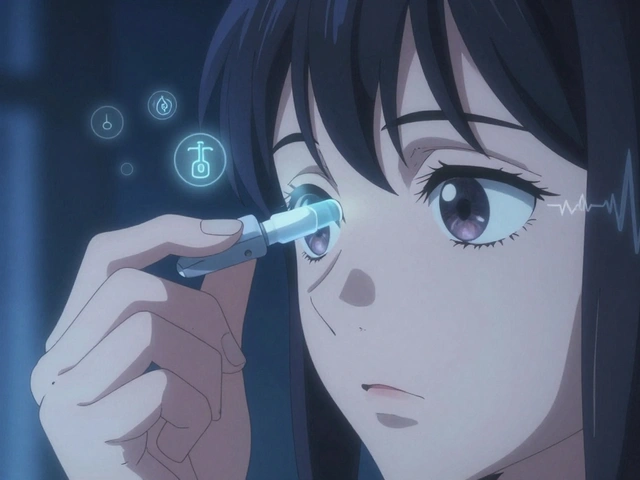
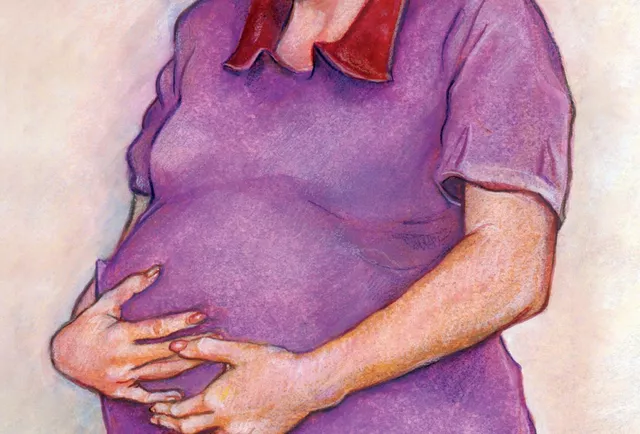
Thank you for presenting such a thorough overview of the migraine‑seizure relationship. The distinction between aura and focal seizure activity is indeed a subtle but crucial clinical point. I appreciate the emphasis on EEG as a diagnostic cornerstone, especially when the phenomenology overlaps. Your summary of shared triggers such as stress and sleep deprivation resonates with many patients I have counseled. It is also reassuring to note that several anti‑epileptic medications double as migraine preventives, simplifying therapeutic regimens for comorbid individuals.
From an inclusive mentorship perspective, it is valuable to recognize that the cortical spreading depression (CSD) observed in migraine aura can set the stage for neuronal hyperexcitability, thereby lowering the seizure threshold. The interplay between glutamate surges and ion channel dysfunction, particularly SCN1A mutations, provides a compelling molecular bridge that explains why some patients experience both conditions. Moreover, the shared environmental precipitants-sleep loss, stress, certain dietary factors-underscore the need for lifestyle interventions that target both headache and seizure prophylaxis. While the literature still debates causality, clinicians should remain vigilant for atypical aura characteristics that may herald epileptiform activity. In practice, a detailed symptom diary often reveals patterns that differentiate prolonged visual phenomena from true epileptic auras.
Delving deeper into the neurophysiological substrate, one must first acknowledge that both migraine aura and tonic‑clonic seizures represent manifestations of cortical hyperexcitability, yet they diverge in spatial and temporal dynamics.
During a migraine aura, cortical spreading depression initiates as a slow moving wave of neuronal depolarization that propagates across the occipital cortex, typically over a span of minutes, and is accompanied by a massive efflux of potassium and glutamate.
This ionic disturbance temporarily inhibits neuronal firing, producing the classic visual phenomena, but it also primes adjacent neuronal networks for subsequent hyperexcitability.
Conversely, a tonic‑clonic seizure emerges from a rapid, synchronized discharge of neuronal populations across both hemispheres, often precipitated by a sudden shift in the excitatory/inhibitory balance.
Genetic studies have illuminated overlapping mutations in ion channel genes such as SCN1A, CACNA1A, and ATP1A2, which encode sodium, calcium, and sodium‑potassium pump subunits respectively; these mutations can predispose individuals to both migraine and epilepsy phenotypes.
Pharmacologically, agents like topiramate and valproate exert dual actions by modulating voltage‑gated sodium channels and enhancing GABAergic inhibition, thereby reducing the likelihood of both aura propagation and seizure generalization.
Clinical observations have reported that patients with familial hemiplegic migraine, a disorder linked to CACNA1A mutations, may experience isolated seizures or even evolve into generalized epilepsy over time.
Neuroimaging advances, particularly functional MRI during aura, have demonstrated activation patterns that overlap with those seen in seizure onset zones, suggesting a shared cortical hotspot in the occipital and temporoparietal regions.
Furthermore, the neuropeptide CGRP, a hallmark of migraine pathophysiology, has been shown to modulate neuronal excitability and may lower the seizure threshold in susceptible brains.
It is also noteworthy that prolonged aura lasting beyond 30 minutes should raise suspicion for an underlying epileptic process, as typical migraine aura resolves within that window.
In the emergency setting, an EEG performed within the post‑ictal period can reveal epileptiform discharges that are absent in pure migraine, providing a diagnostic discriminant.
Therapeutically, clinicians must navigate drug interactions; for instance, certain triptans can increase serotonergic activity and may theoretically reduce seizure threshold, necessitating caution in patients on serotonergic AEDs.
Patient education is paramount: maintaining a meticulous headache‑seizure diary enables identification of common precipitants such as irregular sleep patterns, stress spikes, and bright light exposure, facilitating targeted lifestyle modifications.
Finally, ongoing research into monoclonal antibodies targeting CGRP holds promise for migraine prophylaxis without influencing seizure susceptibility, though longitudinal studies are required to confirm safety in comorbid populations.
Honestly this article reads like a school project.
Great rundown! 👍 Just a quick note – watch out for the missing commas in the list of triggers, it can change the meaning. Also, “EEG can help differentiate an aura from a seizure” could be tweaked to “EEG can help differentiate an aura from a seizure.” Keep up the solid work!
What a motivating piece! The way you highlighted overlapping mechanisms really empowers patients to take charge of both conditions. Remember to keep your medication schedule consistent; abrupt changes can spike both migraine frequency and seizure risk. Stay proactive, track those triggers, and never hesitate to discuss adjustments with your neurologist.
India here – I love how you covered both genetic and environmental aspects. It’s essential to remind readers that while we can’t change our DNA, we can certainly modulate stress, sleep hygiene, and diet to mitigate the shared triggers. For those with comorbid conditions, a balanced approach that includes both AEDs and migraine preventives like CGRP antibodies could be a game‑changer. Let’s keep pushing for more interdisciplinary research.
Hey folks, just chiming in with some jargon‑heavy love. The convergence of glutamatergic excitotoxicity and cortical spreading depression creates a perfect storm for neurovascular dysregulation, which is why we see the bidirectional relationship. If you’re tracking your phenotypes, consider integrating quantitative EEG metrics to differentiate TCD (transcranial Doppler) patterns during aura versus ictal phases. Stay savvy!
I appreciate the balanced tone of the article. The emphasis on a symptom diary is especially useful for clinicians trying to tease apart overlapping features. It’s a practical takeaway for anyone navigating these complex neurological landscapes.
The piece is well‑structured and avoids unnecessary emoticons, which I find professional. The comparison table succinctly highlights the key differences; such visual aids are valuable for both patients and practitioners.